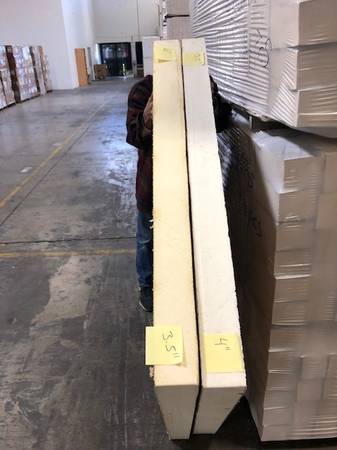What's the boiler efficiency? What temp do you keep inside? Knowing this and exactly how much fuel we used we can estimate fuel costs for the year as well as the effective average R value for the building. This info puts choices about insulation in context.
I don't know the exact days your 700 gallons covered, but I pulled the temp data for your location for the past 30 days. With an indoor temp of 60F, that came out to 820 heating degree days.
700 gallons X 91,502 BTU/Gallon = 64.1 Million BTU
64 MMBTU x .85 (assumed boiler efficiency) = 54.4 MMBTU
54.4 MMBTU / 820 HDD = 66,395 BTU/HDD
Annual HDD for your location at 60F is 5570 HDD.
66,395 BTU/HDD * 5570 HDD = 369.8 MMBTU/Year
369.8 MMBTU / 91,502 BTU/Gal = 4041 Gallons/Year
4041 Gallons * $2.40 = $9600 /Year

66,395 BTU/HDD / 24H = 2766.4 BTU/ Deg /H
820 HDD / 30 Days = 27.3 Delta F (Average indoor vs outdoor temp)
2766.4 BTU/ Deg /H * 27.3F = 75,616 BTU/H
8000 SF (floor) * 20F (assumed ground floor delta T) * 1/R10 = 16,000 BTU/H
75,616 BTU/H - 16,000 BTU/H = 59616 BTU/H
1 / (59616 BTU/H / 13,413SF / 27.3F) = R6.15 Current wall and ceiling effective R value*
*Assumed flat ceiling at 14' and bakes in a bunch of building dynamics like solar gain and infiltration. It is actually a little higher R than expected because inflation isn't broken out. Full detail of the construction would allow an accurate calc.
Adding 2" of R11 polyiso to the interior in a continuous fashion with sealed joints would safe the following"
16,000 BTU/H (floor) + 13,413SF * 27.3F * 1/(R6.15+R11) = 37,378 BTU/H
(75,616 BTU/H - 37,378 BTU/H) / 75,616 BTU/H * $9600 /Year =
$4855 savings per year
Switching to 3" R16.5 polyiso saves $5513 per year. You start to hit diminishing returns because at this point half your heat loss is out the wall/ceiling and half is out the floor.
I did these calcs quick and there are a bunch of assumptions so point out if I got something wrong, but there is a bunch of money on the table.
At $9600/year in propane every 5% efficiency is $480/year. If your boiler is 90% efficient, it's not worth touching in most circumstances. If it is 70%, it is almost always worth upgrading. Everything in between, you keep an eye on that number relative to cost of more insulation.
Check with the state to see if there are any incentive programs for improving energy efficiency. They might be through you electric utility and you might need to do a trick like throwing in a little bit of electric heat (couple baseboards) to quality.

bayinsulation.com



 )
)